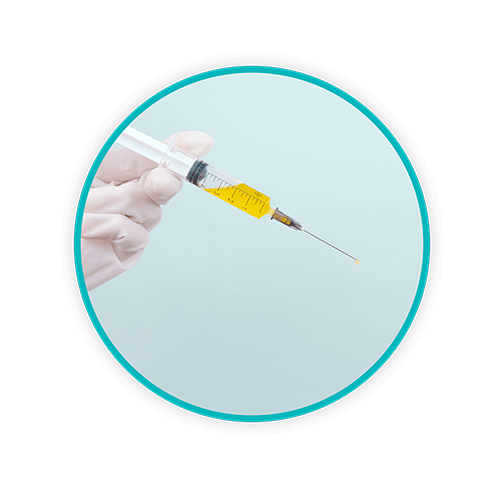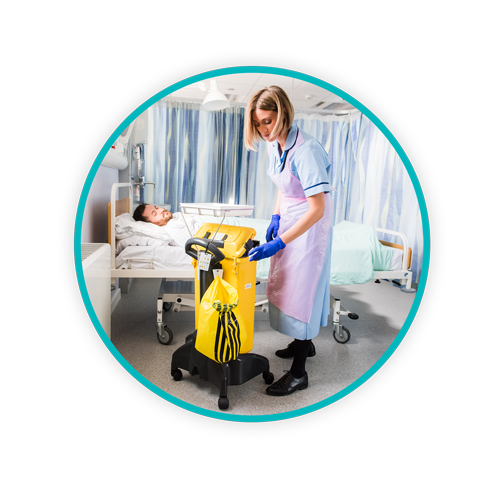The Cost of a Needlestick Injury

In 2002, the Control of Substances Hazardous to Health Regulations were passed in the United Kingdom to enhance protections for workers. The new regulations promoted the use of safety engineered devices and required employers to assess and monitor the risk of exposure for their employers, including providing information and training for bloodborne pathogen risks. Along with other regulations passed in the late 90s, many believed we could see an end to sharps injuries.
Fast forward two decades, and we are still seeing a worrying rise in the rates of needlestick injuries. In a 2020 survey conducted among members of the Royal College of Nursing (RCN), 63% of respondents reported receiving at least one sharps injury during their career. In comparison, that number was only 48% when the survey was conducted in 2008, suggesting that the problem has far from abated. There are major consequences from both a health and safety perspective as well as economic and legal liabilities.
TOPICS WE WILL COVER:
3 / Everyday needlestick injury impact
What is the cost?
The exposure risk of needlestick injuries is far greater than is commonly reported. While Aids, Hepatitis B, and Hepatitis C are amongst the more severe diseases that can be contracted via sharps penetration, there are in fact more than 60 bloodborne pathogens that can be contracted as a result of a sharps injury.
as a result of a sharps injury.
In the UK, there is an economic burden to sharps injuries. Between 2012 and 2017, NHS Resolution received 1,833 incident claims for needlestick injuries, paying out 1,213 of those claims to the tune of £4,077,441.1 Additionally, a freedom of information request response published by NHS Resolution in January 2020 shows that they settled 181 and 185 claims in 2018 and 2019, respectively, for a combined cost of £953,906. It's worth noting that these cost only reflected reported claims, when many needlestick injuries may go unreported. Further, there are hidden costs that can be associated with sharps injuries, including investagive resources and the side effects and lost-time associated with potential treatments.
By comparison, in the US, the estimated cost of a single Needlestick Injury (NSI) treatment ranges between US$500 to US$4,000.2,5 Leveraging these costs, the annual economic burden of NSIs in the US was estimated to be between US$118 million to US$591 million (based on national occurrence of 236,000 cases).3 For the more serious cases, however, the costs can far exceed the average. According to the American Hospital Association, one case of serious infection by bloodborne pathogens can cost US$1 million or more in expenditures for testing, follow up tests, lost time, and disability payments.4
Despite being staggeringly high, these costs are underestimated in that they do not account for long-term treatment costs associated with illness contracted from the injury or litigation and compensation costs.2 They also do not account for the “harder to monetise” human impact that is experienced by the healthcare workers affected.
The emotional toll of a needlestick injury
There is no “convenient time” for a sharps injury to occur and, especially within the OR, many practitioners report a certain stigmatism against reporting a stick. When a needlestick injury occurs, there is a natural disruption that follows. In the operating theatre the exposed healthcare worker must scrub out and be replaced, and further time is taken up in the drawing of blood from the patient and follow-up investigation into patient records; this process naturally creates an environment where the victim feels they have done something wrong.
scrub out and be replaced, and further time is taken up in the drawing of blood from the patient and follow-up investigation into patient records; this process naturally creates an environment where the victim feels they have done something wrong.
A common narrative from needlestick injury survivors is that the time waiting for blood draw results is their most emotionally unsettling memory of being stuck. Beyond the pressure that they feel having left their team a staff member short, they are now in a state of psychological unrest waiting to find out whether they have contracted a life-threatening illness.
Every needlestick injury has an individual impact
Every needlestick injury incurs a significant consequence for the person exposed and their loved ones, especially if it was a high-risk exposure or the patient chooses not to consent to having their blood drawn. If the victim acquires a communicable disease, the implications are life altering. In the case of a person accidently sticking a colleague, there is often a high degree of trauma and physiological distress that the team member has to endure.
Eliminating sharps injuries relies on many factors – safer devices, safer sharps containers, leadership focus and safety process adoption. See our education poster on needlestick injury prevention here for further insight. However overall, as an industry and as a group of people committed to improving safety for healthcare workers, it requires a collaborative effort ensure that everyone – healthcare practitioners, portering staff, and patients – get home safely at the end of the day.
1 NHS Resolution. Did You Know? Preventing Needlestick Injuries. 2017. Available at: https://resolution.nhs.uk/resources/preventing-needlestick-injuries/
2 Centers for Disease Control and Prevention. Workbook for designing, implementing, and evaluating a sharps injury prevention program. 2004. Available at: www.cdc.gov/sharpssafety/index.html.
3 Department of Health and Ageing. The Australian Immunisation Handbook 9th Edition.
4 Pugliese G and Salahuddin M. Sharps injury prevention program: a step-by-step guide. Chicago: American Hospital Association. 1999
5 Lee JM, Botteman MF, Xanthakos N, Nicklasson L. Needlestick injuries in the United States: epidemiologic, economic, and quality of life issues. American Association of Occupational Health Nurses Journal. 2005. 53(3):117-33
